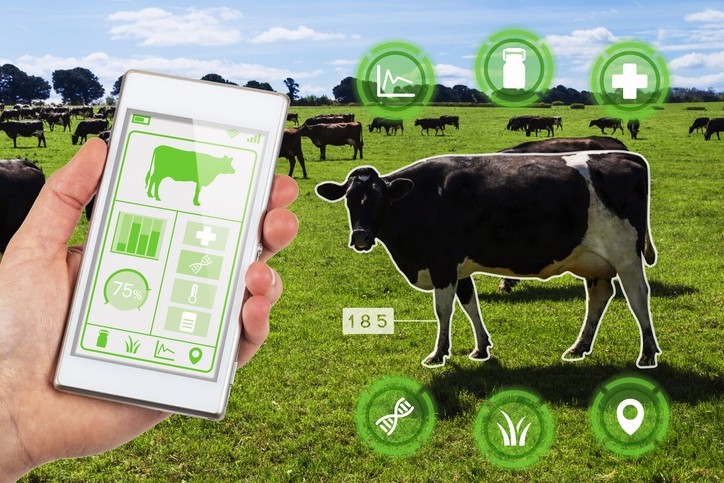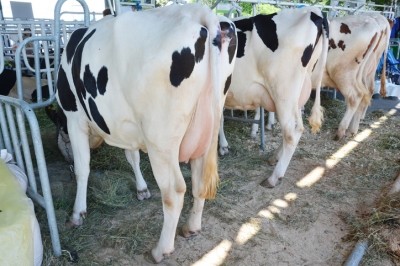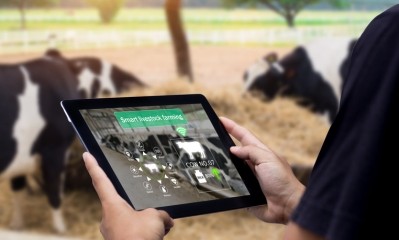Dispatches from One: the Alltech Ideas Conference
Dairy sensor tech looks to assess milk components

The North American-headquartered agtech startup was one of a series of companies to recently complete the Pearce Lyons Accelerator. The company presented on its work during One: the Alltech Ideas Conference last month in Lexington, Kentucky.
The company uses a sensor and deep-learning algorithms to measure and assess multiple data points in milk as it is collected with the intention of being able to identify cow reproductive status or the potential start of diseases like ketosis or mastitis, said Bethany Deshpande, founder and CEO of SomaDetect.
“Today we have about 250 sensors installed on dairies on the US and Canada,” she told us. “We collect a ton of data, which is enabling us to develop the product even further.”
The accelerator program provided a way to help the startup gain additional perspective on the global dairy industry, she said. It also helped provide background and support regarding planning and business decisions.
“We were excited to be accepted into the program,” Deshpande said. “Participating in it this past year has been beneficial to the company and it was perfect timing for us – while we are developing our product and building our company, it's fantastic to get this level of support and be able to move forward with concrete plans in motion and things to show.”
An additional outcome of taking part in the accelerator program is an upcoming pilot program with Alltech and an Ontario-based dairy, she added.
The pilot also involves providing some of the gathered information back to both entities.
“For dairy farmers and feed companies our technology can help them make better milk or better recommendations for products or better decisions on the farm,” she said.
Answering questions on feed, pregnancy and disease
The SomaDetect program uses an optical sensor technology that is able to make quick assessments of the compounds in raw milk, according to company information.
The sensor is added to the milking line and does not alter the milk it gathers data, meaning the milk does not have to be removed from what is collected.
Instead, the sensor sends a beam of light through the milk to measure compounds and components within the fluid, the company said.
The data collected can be assessed with a series of algorithms that have been developed and are being refined, said Deshpande.
“We’re seeking fat, protein and somatic cell counts and reproductive status.”
In addition to an instant snap-shot of milk components, the data assessment is designed to incorporate information gathered during several days, she said.
The information would be accessible through a tablet, smartphone or similar device.
“We talk about moving from independent points in time to being able to offer next level analytics or data that gives it greater ability to make decisions,” she said. “It is not just what is happening right this second, but what has happened over the previous days.”
“It’s the little pieces of data that come together that empower our decision making – that’s what we see in the technology,” she added.
The data collected, and information being generated is intended to help provide insights for producers, said Deshpande.
These could include what changes to elements within the milk like the fat content or fat and protein ratio mean in terms of the ration or feed being used.
“This will help a farmer do a ton of stuff in terms of nutritional understanding especially with fresh cows,” she said.
Currently, the company is using the data generated from ongoing trial placements of the sensor units to continue to refine the product and how information is reported back to the dairy producer, she said. Eventually, the system will allow producers to track their information in “real time.”
“The main focus right now is determining pregnancy in a cow and identification of mastitis and ketosis – the reality is those are things that are really important to dairy farmers,” she said.
The startup continues to look for producers interested in being “early adopters” of the technology, said Deshpande.
The group is working with data generated by about 5,000 cows, at the moment, and is planning to expand to about 20,000 to 25,000 by the end of the year.
However, the goal is to take the sensor and service to market in 2020, she said. Initially, it is set to be available across Canada and the US.
The company also received an investment from Cavallo Ventures, the venture capital operation affiliated with Wilbur Ellis, in May.
That support is intended to help with the ongoing algorithm refinement and early commercialization efforts, added Deshpande.














